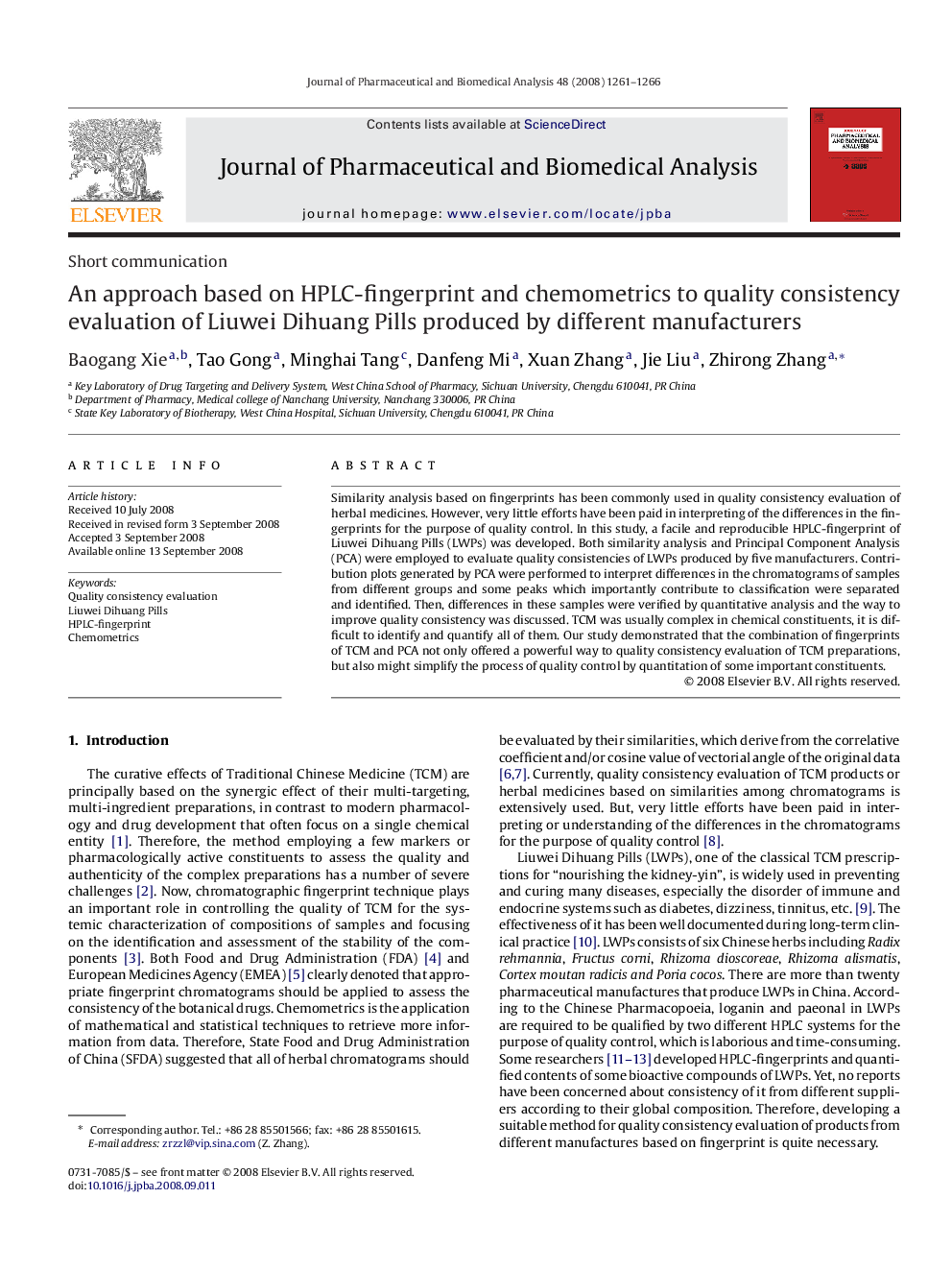| Article ID | Journal | Published Year | Pages | File Type |
|---|---|---|---|---|
| 1222541 | Journal of Pharmaceutical and Biomedical Analysis | 2008 | 6 Pages |
Similarity analysis based on fingerprints has been commonly used in quality consistency evaluation of herbal medicines. However, very little efforts have been paid in interpreting of the differences in the fingerprints for the purpose of quality control. In this study, a facile and reproducible HPLC-fingerprint of Liuwei Dihuang Pills (LWPs) was developed. Both similarity analysis and Principal Component Analysis (PCA) were employed to evaluate quality consistencies of LWPs produced by five manufacturers. Contribution plots generated by PCA were performed to interpret differences in the chromatograms of samples from different groups and some peaks which importantly contribute to classification were separated and identified. Then, differences in these samples were verified by quantitative analysis and the way to improve quality consistency was discussed. TCM was usually complex in chemical constituents, it is difficult to identify and quantify all of them. Our study demonstrated that the combination of fingerprints of TCM and PCA not only offered a powerful way to quality consistency evaluation of TCM preparations, but also might simplify the process of quality control by quantitation of some important constituents.
